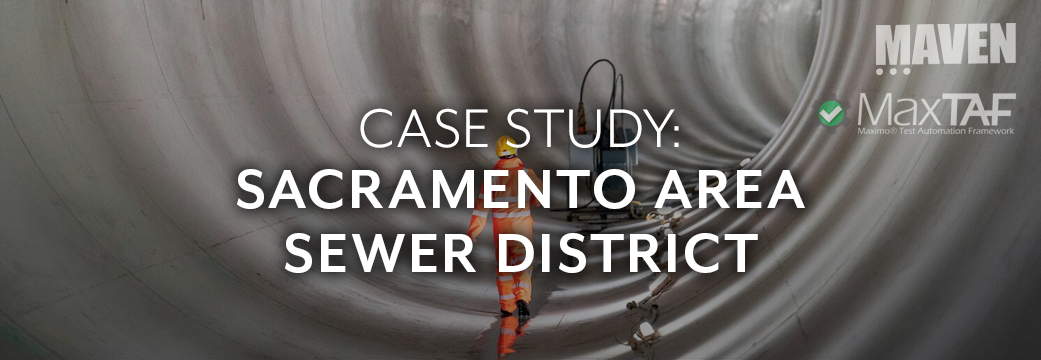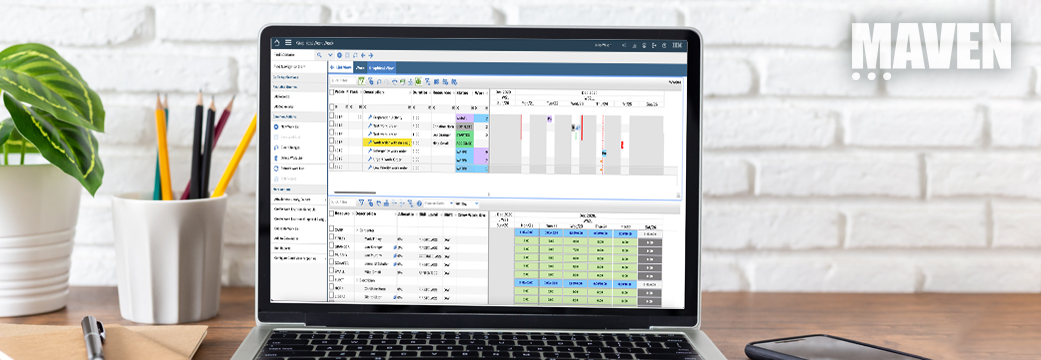The Sacramento Area Sewer District (SacSewer), which collects wastewater from many Sacramento area homes and businesses, uses IBM software to help predict equipment problems in its wastewater collection system.
Maven worked with SacSewer to upgrade their IBM Maximo Asset Management application to create a baseline performance measurement for Maximo to support changes introduced in 7.6.1.x. SacSewer and Maven configured user journeys to simulate high-volume activities and potential performance bottlenecks, including using GIS maps via Maximo Spatial. Together, they simulated up to 300 concurrent connections over a 24-hour time period, and generated a report identifying performance delays.
This upgrade project required close collaboration between IT, management, vendors, and business users to ensure precise, informed decisions were made. This communication and flexibility was critical to success.
Hardware Analysis and Selection
Due to the global hardware shortage, caused by pandemic related supply chain issues, hardware delivery dates were continually pushed back, delaying the project. A temporary measure involving hosting Maximo on virtual machines was examined; however, it revealed fundamental issues with this strategy which resulted in a no-go decision.
User Feedback
When examining the virtual machine option, the standard data gathered during testing looked as if the system was working well. However, while the system was under testing, users also logged into Maximo to provide their feedback. Compared to the standard data their feedback was that the system was performing unacceptably. It was slow and behaving inconsistently. This prompted a deeper drill-down into resource usage metrics, and eventually the bottleneck was discovered. Once the intended physical hardware was delivered, and performance testing was repeated, a go-live decision was made confidently. This was based on green-lights from the user team, healthy looking data gathered by the performance tools, and good resource usage metrics from system monitoring.
Performance testing was a requirement for the Maximo upgrade project from the start.
Analysis of historical data on activities within Maximo allowed for the creation of accurate Maximo usage emulation. This resulted in trustworthy performance testing enabling a confident decision not to proceed in 2022 and to proceed in 2023.
INSIGHTS
Agile & Flexible • Collaborative • Adaptable • Partnership • User-Friendly •
Subject Matter Experts (SMEs) • Standardization • Automated Performance Testing
SOLUTION
Maven successfully analyzed historical data to allow for the creation of accurate Maximo usage. This resulted in trustworthy performance testing. Maven engaged MaxTAF to achieve this. Testing was automated using MaxTAF’s Cloud, a Selenium-based testing tool designed for Maximo. SacSewer and Maven generated reports identifying performance delays and the performance requirements. In addition to uploading the data for SacSewer, Maven provided software configuration components of the Maximo project while SacSewer continued to wait for the new hardware to be delivered. Maven, MaxTAF, and SacSewer learned a valuable lesson: System performance must first, and foremost, be driven by the user-team rather than IT. Users must always make the final call.







